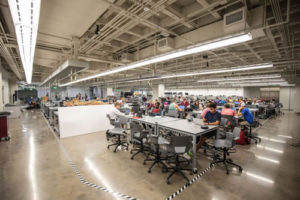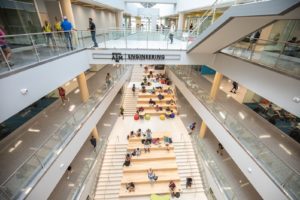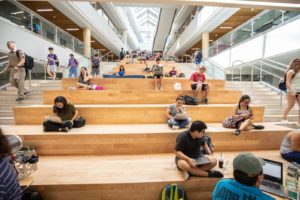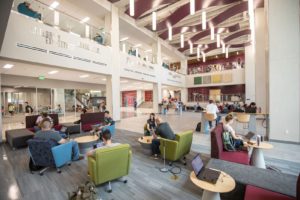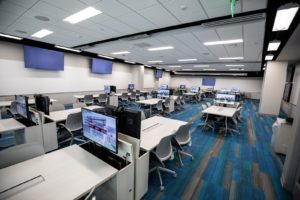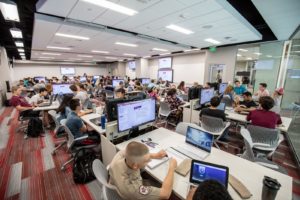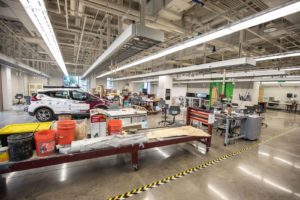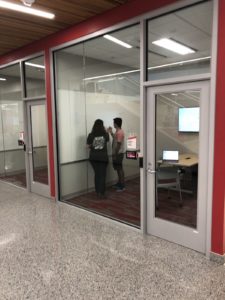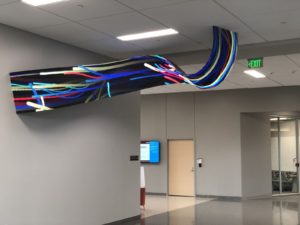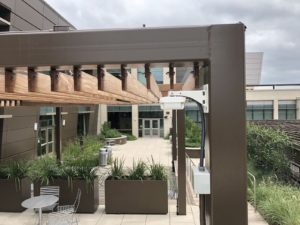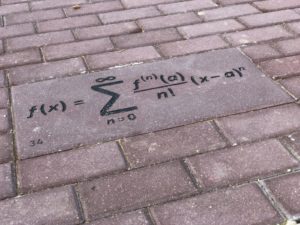The Texas A&M University College of Engineering has completed a full-scale expansion and modernization of its Zachry Engineering Education Complex in order to create an innovative, high-tech learning environment for undergraduate engineering education.
The unique complex, which is the largest on campus, is part of the College of Engineering’s 25 by 25 initiative to support 25,000 engineering students by 2025 in response to the country’s need for more engineers.
The scale of the new Zachry Building sets it apart from other projects that the university has undertaken. It is a 525,000 square foot building with 30 learning studios, which replace what traditionally have been called classrooms. The architectural design is based on light and glass, and the old row-by-row classrooms have been transformed into a hub-and-spoke design to enable a more interactive and collaborative learning style.
As host to one of the world’s leading engineering programs, the college’s lab environment depends on a high volume of IoT devices, many of which need to connect, but must be segmented securely, so they don’t affect the rest of the network. BLE beacons, combined with a new mobile app called called “EngiNEARME,” provide an innovative mapping system to help students, faculty, and visitors easily navigate within the Zachry complex.
Here’s a look at this innovative building.
The Learning Stairs, in the middle of the building, were a very popular part of the original Zachry building. Students asked the college to enhance the ability to study on them in the new building. Each stair has three power outlets to ease charging, collaboration, and hanging out.
The open lobby area offers numerous places for students to study. There is a Starbucks inside the building, so no one suffers from caffeine withdrawal.
All 38 smart learning studios are configured in the same way, with tables set up for four-person group work. Wireless access is designed to handle multiple connected devices per student. Professors can share content with students; students can share content with each other or their professors. The rooms also contain a videoconferencing system with high-quality direction microphones built into the ceiling. Everything is controlled via an interactive whiteboard at the front of the room.
In this smart design studio, the professor is controlling all of the monitors and video conferencing via the touch screen interactive digital canvas.
The Fischer Engineering Design Center is a lab containing everything students need to bring their ideas to life: 3D printers, computer-controlled cutting machinery, a metal shop, an auto shop, fabrication tools, and more.
Students can book time in one of the huddle rooms, located throughout the building, with the EngiNEAR Me mobile app. Each huddle room contains a monitor with wireless projection capability in addition to a desk and whiteboard.
The building contains an engineering art collection, all based upon engineering principles, equations, and technology, designed to encourage creativity. The colors on this display are generated from real-time occupancy data inside the building. All of the art is to help students connect innovation and creativity in all forms.
The Hewlett Packard Enterprise Tech Deck boasts city views, outdoor wi-fi coverage, and green space.
The outside features plenty of open green space with wi-fi coverage.
Here’s one of 50 engineering equations that are etched into the brickwork outside. The college will offer tours of the equations explaining their significance.
- 4 lessons learned from a successful badging initiative - May 23, 2019
- 6 tips for reaching adult students - May 20, 2019
- How can higher-ed better prepare students to enter the workforce? - April 29, 2019

